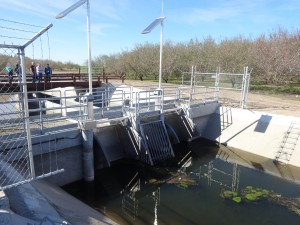California’s New Water Measuring, Recording & Reporting Law

California Governor Brown signed Senate Bill 88 into law on June 24, 2015. Part of that Bill amended the California Water Code to require that all persons who divert 10 acre-feet or more of water per year after January 1, 2016 must install a water measuring device to measure the rate of diversion (including diversion into and out of storage). Water users must report installation to the Water Board, as well as provide evidence that the measuring device is functioning properly at five-year intervals. Water users must maintain records of diversion at time intervals of one hour or less (in some cases) and total amounts of water diverted.
Annual diversion reports must be submitted to the Water Board, and the law states: “Compliance with the applicable requirements of this section is a condition of every registration, permit, or license.” The new law imposes civil fines in an amount not to exceed $500 per violation, per day, which may be enforced civilly through the superior court, or administratively by the Water Board. The Water Board will provide forms for reporting.
On January 19, 2016, the Water Board adopted emergency regulations to implement the new water measuring law. Those regulations were sent to the Office of Administrative Law for approval. Of note, the proposed regulations give the Deputy Director of the Division of Water Rights the authority to require monthly, daily, or more frequent reporting in times when there are insufficient flows to support all diversions. Additionally, the regulations propose a phased approach that takes into account the amount of water diverted, with larger diverters needing to comply with more stringent requirements than smaller diverters.
The recent drought spurred California law makers to enact this law that will mark a drastic change in the way water users operate. The Water Board reports that this new measurement, recordkeeping, and reporting law will apply to approximately 12,000 water users in California. The Water Board hopes that the new law and regulations will improve water use regulation and planning. Industry groups, including the California Cattlemen’s Association, oppose the regulations.
In Oregon, the Water Resources Department has phased in water use measuring, recordkeeping, and reporting requirements into new water use permits that are issued. California’s new law and regulations impose a new condition on existing water use rights, raising red flags about regulatory takings.
For access to S.B. 88 and the draft administrative rules, visit: http://www.waterboards.ca.gov/waterrights/water_issues/programs/measurement_regulation/.
Stay tuned to Schroeder Law Offices’ Water Blog for more news that may affect you!





